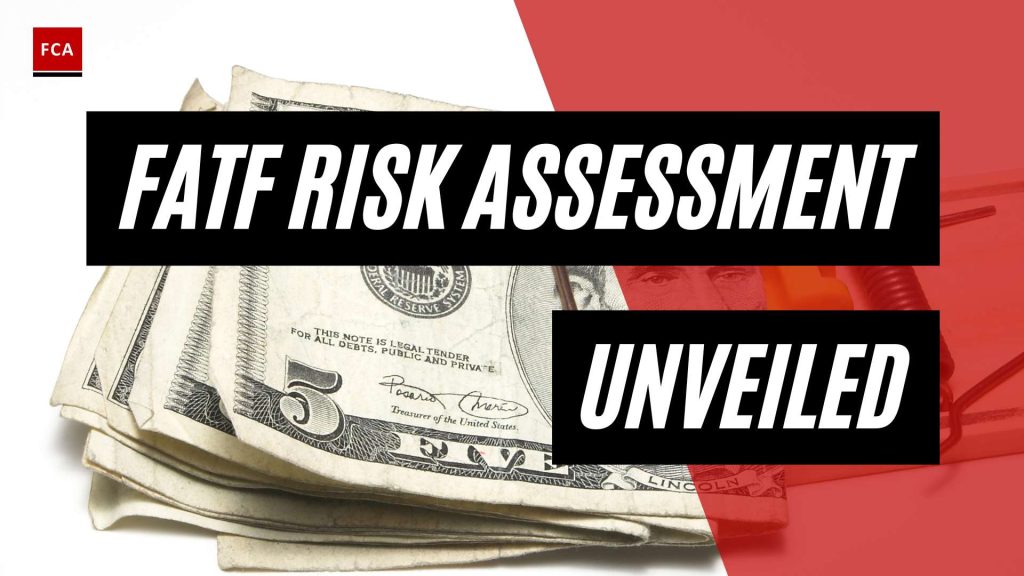Understanding AML Regulation
Anti-Money Laundering (AML) measures play a vital role in preventing illicit financial activities and protecting the integrity of the global financial system. These measures are designed to detect and deter money laundering and the financing of terrorism. One of the key international organizations driving AML regulation is the Financial Action Task Force (FATF).
The Importance of Anti-Money Laundering Measures
Anti-Money Laundering measures are essential for maintaining the integrity and stability of the financial system. Money laundering involves the process of transforming illicitly obtained funds into legitimate assets, making it difficult to trace the origins of the funds. By implementing robust AML measures, countries and financial institutions can detect and report suspicious transactions, ultimately disrupting the flow of illicit funds.
The key objectives of AML measures include:
- Preventing and detecting money laundering and terrorist financing activities.
- Encouraging the adoption of risk-based approaches by financial institutions.
- Promoting international cooperation and information sharing to combat money laundering and terrorist financing on a global scale.
To achieve these objectives, governments and financial institutions are required to implement measures such as customer due diligence, record keeping, reporting of suspicious activities, and the establishment of internal controls and procedures.
The Role of Financial Action Task Force (FATF)
The Financial Action Task Force (FATF) is an intergovernmental organization that sets international standards and promotes the implementation of legal, regulatory, and operational measures to combat money laundering, terrorist financing, and other related threats. Established in 1989, the FATF operates as a global standard-setter in the field of anti-money laundering and counter-terrorism financing (AML/CFT).
The FATF provides a framework of recommendations, commonly known as the FATF Recommendations, which outline the necessary measures and best practices to be implemented by member countries to combat money laundering and terrorist financing. These recommendations cover areas such as customer due diligence, reporting of suspicious transactions, international cooperation, and the regulation of virtual assets.
Member countries of the FATF, including major financial centers around the world, commit to implementing these recommendations and undergo mutual evaluations to assess their level of compliance. Countries that fail to meet the required standards may face consequences such as being placed on the FATF grey list or blacklist, which can have significant implications for their international financial reputation.
By establishing and promoting international standards, the FATF plays a crucial role in fostering collaboration among countries, enhancing the effectiveness of AML/CFT measures, and ensuring a global response to the challenges posed by money laundering and terrorist financing.
Understanding the importance of AML measures and the role of the FATF is essential for professionals working in compliance, risk management, and anti-money laundering. By staying informed and implementing effective AML measures, individuals and organizations can contribute to the global fight against financial crime and help maintain the integrity of the financial system.
FATF Risk Assessment
In the realm of anti-money laundering (AML) regulation, the Financial Action Task Force (FATF) plays a crucial role in combating money laundering and terrorist financing. One of the key tools utilized by the FATF is risk assessment. Let’s explore what FATF risk assessment entails and the objectives and benefits associated with it.
What is FATF Risk Assessment?
FATF risk assessment is a systematic process used to identify, understand, and mitigate money laundering and terrorist financing risks within a country’s financial system. It involves analyzing various factors, including the vulnerabilities of the financial system, the potential impact and likelihood of risks, and the effectiveness of existing AML measures.
By conducting risk assessments, countries can gain a comprehensive understanding of the specific risks they face, enabling them to develop targeted strategies to combat money laundering and terrorist financing effectively. These assessments provide invaluable insights into the nature and extent of risks, helping policymakers and regulators allocate resources efficiently and prioritize their AML efforts.
Objectives and Benefits of FATF Risk Assessment
The primary objectives of FATF risk assessment are to:
-
Identify Money Laundering and Terrorist Financing Risks: FATF risk assessment aims to identify the potential vulnerabilities and threats within a country’s financial system that could be exploited for money laundering or terrorist financing purposes. This helps in understanding the specific risks faced and tailoring preventive measures accordingly.
-
Assess the Vulnerabilities of the Financial System: By assessing the vulnerabilities of the financial system, FATF risk assessment enables countries to identify gaps or weaknesses in their AML framework. This allows for targeted enhancements to bolster the overall resilience of the system.
-
Estimate the Impact and Likelihood of Risks: FATF risk assessment helps in quantifying and qualifying the potential impact and likelihood of money laundering and terrorist financing risks. This information assists policymakers in prioritizing resources and implementing risk mitigation strategies proportionate to the identified risks.
The benefits of FATF risk assessment include:
-
Effective Risk Management: Risk assessment is a crucial component of risk management. By conducting thorough assessments, countries can proactively identify, understand, and manage the risks associated with money laundering and terrorist financing. This ensures that resources are allocated efficiently and measures are implemented effectively.
-
Enhanced AML and CFT Measures: Through risk assessment, countries can strengthen their AML and counter-terrorist financing (CFT) measures by aligning them with the specific risks they face. This targeted approach enables the development of robust preventive measures tailored to the unique challenges of each jurisdiction.
-
Compliance with International Standards: FATF risk assessment supports countries in aligning their AML/CFT efforts with international standards and best practices. This helps ensure that countries are compliant with FATF recommendations and reduces the risk of being listed in the FATF grey list or blacklist.
By conducting comprehensive risk assessments, countries can enhance their understanding of the risks posed by money laundering and terrorist financing, leading to the development of effective preventive measures. These assessments serve as a foundation for a risk-based approach to AML/CFT, allowing for targeted and efficient allocation of resources to combat financial crime effectively.
In the next section, we will delve into the components involved in conducting a FATF risk assessment, providing insights into the process and its implementation.
Components of FATF Risk Assessment
FATF risk assessment involves a comprehensive evaluation of money laundering and terrorist financing risks, as well as the vulnerabilities present in the financial system. By estimating the impact and likelihood of these risks, authorities can develop effective risk mitigation strategies. Let’s explore the key components of FATF risk assessment in more detail.
Identifying Money Laundering and Terrorist Financing Risks
The first component of FATF risk assessment is the identification of money laundering and terrorist financing risks. This involves analyzing various factors, such as the nature of the financial system, the types of financial products and services offered, and the presence of illicit activities. By understanding the specific risks associated with money laundering and terrorist financing, authorities can tailor their efforts to prevent and detect these activities more effectively.
The identification process often involves a thorough analysis of transactional data, customer profiles, and suspicious activity reports. By examining patterns and anomalies, authorities can uncover potential risks and take appropriate actions to mitigate them. For more information on money laundering, you can refer to our article on FATF money laundering.
Assessing the Vulnerabilities of the Financial System
Assessing the vulnerabilities of the financial system is another crucial component of FATF risk assessment. This involves examining the weaknesses and gaps in the system that could be exploited for illicit activities. Vulnerabilities can arise from various sources, including inadequate customer due diligence measures, weak internal controls, and insufficient regulatory oversight.
By understanding these vulnerabilities, authorities can implement targeted measures to strengthen the financial system’s resilience against money laundering and terrorist financing. Regular assessments and evaluations are essential to stay proactive in identifying and addressing vulnerabilities. To learn more about the FATF’s evaluations, take a look at our article on FATF mutual evaluations.
Estimating the Impact and Likelihood of Risks
Estimating the impact and likelihood of risks is a critical step in FATF risk assessment. It involves analyzing the potential consequences of money laundering and terrorist financing activities, as well as the likelihood of those risks materializing. This assessment helps authorities prioritize their resources and focus on the areas that pose the highest threats.
To estimate the impact and likelihood of risks, authorities consider various factors, including the scale of illicit funds involved, the potential harm to the financial system and society, and the probability of specific scenarios occurring. This analysis enables them to allocate resources effectively and implement risk-based measures. To gain more insights into the risk-based approach, you can refer to our article on FATF risk-based approach.
By incorporating these components into the risk assessment process, authorities can gain a comprehensive understanding of the risks associated with money laundering and terrorist financing. This knowledge empowers them to develop and implement robust measures to combat illicit activities effectively. Furthermore, conducting regular risk assessments aligns with the FATF’s recommendations and contributes to the overall integrity and stability of the global financial system.
Conducting a FATF Risk Assessment
When it comes to combating money laundering and terrorist financing, conducting a thorough risk assessment is a crucial step. The Financial Action Task Force (FATF) provides guidance and frameworks for countries and organizations to assess and mitigate these risks. Let’s explore the process of conducting a FATF risk assessment, which involves gathering relevant data and information, analyzing the data to identify patterns, and developing risk mitigation strategies.
Gathering Relevant Data and Information
The first step in conducting a FATF risk assessment is to gather relevant data and information. This involves collecting data from various sources, including financial institutions, government agencies, law enforcement, and other relevant stakeholders. The data collected may include information about transactions, customer profiles, suspicious activities, and typologies related to money laundering and terrorist financing.
To ensure a comprehensive assessment, it is important to gather data from multiple sources and jurisdictions. This allows for a holistic understanding of the risks involved and helps identify potential vulnerabilities in the financial system. The data collected should be accurate, up-to-date, and reliable to ensure the effectiveness of the risk assessment process.
Analyzing the Data and Identifying Patterns
Once the relevant data and information have been gathered, the next step is to analyze the data to identify patterns and trends. This analysis helps in understanding the nature and extent of money laundering and terrorist financing risks. By using data analytics tools, statistical techniques, and expertise in financial crime, patterns can be identified, and suspicious activities can be detected.
Analyzing the data involves looking for anomalies, unusual patterns of transactions, high-risk customer profiles, and other indicators of potential money laundering or terrorist financing activities. It is important to consider both quantitative and qualitative factors during the analysis process. This includes examining transaction volumes, frequencies, geographical locations, and other contextual information.
Developing Risk Mitigation Strategies
Based on the analysis conducted, the final step in the FATF risk assessment process is to develop risk mitigation strategies. These strategies aim to address the identified risks and vulnerabilities in the financial system effectively. The strategies may include implementing new policies, procedures, and controls to strengthen Anti-Money Laundering (AML) and Counter Financing of Terrorism (CFT) measures.
Risk mitigation strategies should be tailored to the specific risks identified during the assessment. This may involve enhancing customer due diligence processes, implementing transaction monitoring systems, improving reporting mechanisms, and conducting ongoing training and awareness programs for employees. The goal is to minimize the risks associated with money laundering and terrorist financing and ensure compliance with international standards set by the FATF.
By following these steps and conducting a comprehensive FATF risk assessment, countries and organizations can strengthen their AML and CFT measures, protect their financial systems, and contribute to the global fight against financial crimes. For more information on FATF and related topics, explore our articles on FATF member countries, FATF recommendations, and FATF money laundering.
Challenges and Best Practices
Conducting FATF risk assessments is a complex process that requires careful consideration and adherence to international standards. While these assessments are essential for identifying and mitigating money laundering and terrorist financing risks, there are several challenges that organizations may encounter. However, by following best practices, they can navigate these challenges effectively to ensure a robust risk assessment framework.
Challenges in Conducting FATF Risk Assessments
-
Data Availability and Quality: Obtaining reliable and up-to-date data can be a challenge, particularly when dealing with emerging trends and evolving risks. The availability and quality of data can vary across jurisdictions, making it difficult to conduct comprehensive assessments.
-
Information Sharing and Collaboration: Effective risk assessments often require collaboration between various stakeholders, including financial institutions, law enforcement agencies, and regulatory bodies. However, information sharing can be hindered by legal and operational constraints, hindering the accuracy and efficiency of risk assessments.
-
Complexity of Financial Systems: Financial systems are intricate and constantly evolving, making it challenging to identify and understand the vulnerabilities within them. Keeping up with the latest financial products, services, and technologies is crucial for accurate risk assessments.
-
Dynamic Nature of Money Laundering and Terrorist Financing: Money laundering and terrorist financing techniques are constantly evolving, requiring organizations to stay vigilant and adapt their risk assessment methodologies accordingly. Keeping pace with new typologies and emerging threats is a continual challenge.
-
Resource Constraints: Conducting comprehensive risk assessments requires significant resources, including skilled personnel, technology infrastructure, and financial investment. Smaller organizations or jurisdictions with limited resources may face difficulties in conducting robust assessments.
Best Practices for Effective Risk Assessment
-
Risk-Based Approach: Adopt a risk-based approach that focuses resources on areas of higher risk. This involves identifying and prioritizing risks based on their potential impact and likelihood, enabling organizations to allocate resources effectively.
-
Engagement and Collaboration: Foster collaboration between public and private sector entities to share information, expertise, and resources. Establishing partnerships and information-sharing mechanisms can enhance the effectiveness of risk assessments.
-
Data Collection and Analysis: Invest in robust data collection and analysis processes. This includes gathering data from various sources, conducting thorough analysis to identify patterns and trends, and leveraging technology solutions to streamline the process.
-
Training and Awareness: Provide comprehensive training to personnel involved in risk assessments. This ensures a clear understanding of money laundering and terrorist financing risks, as well as the methodologies and tools used for assessment.
-
Regular Reviews and Updates: Conduct regular reviews of risk assessment frameworks to keep them aligned with evolving risks and regulatory requirements. This includes reviewing typologies, methodologies, and adapting to emerging trends in money laundering and terrorist financing.
By addressing these challenges and implementing best practices, organizations can enhance the effectiveness of their FATF risk assessments. This not only strengthens their anti-money laundering and counter-terrorism financing measures but also ensures compliance with international standards. For more information on FATF-related topics, check out our articles on FATF grey list, FATF recommendations, and FATF member countries.
Importance of FATF Risk Assessment
FATF risk assessment plays a crucial role in enhancing anti-money laundering (AML) and countering the financing of terrorism (CFT) measures. By conducting comprehensive risk assessments, countries and financial institutions can better understand and mitigate the risks associated with money laundering and terrorist financing activities. Let’s explore how FATF risk assessment contributes to these important objectives.
Enhancing AML and CFT Measures
FATF risk assessment serves as a foundation for strengthening AML and CFT measures. By identifying and assessing the risks specific to their jurisdictions, countries can develop targeted strategies to combat money laundering and terrorist financing. This includes implementing robust customer due diligence processes, adopting risk-based approaches, and enhancing suspicious transaction monitoring and reporting systems. FATF risk assessment provides a structured framework for governments and financial institutions to evaluate the effectiveness of their existing controls and make necessary improvements.
In order to effectively combat money laundering and terrorist financing, it is crucial to stay updated on the latest FATF recommendations and guidelines. These resources provide valuable insights and guidance on implementing risk-based approaches, conducting thorough customer due diligence, and establishing effective AML and CFT frameworks. For more information, refer to our article on FATF recommendations.
Ensuring Compliance with International Standards
FATF risk assessment is vital for ensuring compliance with international AML and CFT standards. The Financial Action Task Force sets global standards and monitors compliance to combat money laundering, terrorist financing, and other related threats. Countries that fail to meet these standards are at risk of being placed on the FATF grey list or even the FATF blacklist, which can have significant implications for their financial systems and reputations. By conducting thorough risk assessments and implementing effective risk mitigation strategies, countries can demonstrate their commitment to combating financial crime and enhance their compliance with FATF standards.
To maintain a strong global AML and CFT framework, FATF conducts mutual evaluations to assess countries’ compliance with its standards. These evaluations provide insights into the effectiveness of a country’s AML and CFT measures, identifying areas for improvement and reinforcing the importance of risk assessment in achieving compliance. For more information on mutual evaluations and their significance, refer to our article on FATF mutual evaluations.
By recognizing the importance of FATF risk assessment, countries and financial institutions can proactively address the challenges posed by money laundering and terrorist financing. Through continuous evaluation and enhancement of AML and CFT measures, they can contribute to global efforts in safeguarding the integrity and stability of the financial system.








